#alaska wildlife conservation
Explore tagged Tumblr posts
Video
youtube
Quiz: 🦬Exploring Alaska's Wildlife and Conservation 🦅~ Daily quiz 1-23
Test your knowledge about the amazing wildlife in Alaska and the efforts at the Alaska Wildlife Conservation Center to protect it. Dive into Alaska's wilderness with this quick 6-question quiz! Learn about the amazing work of the Alaska Wildlife Conservation Center and fascinating facts about Alaskan wildlife. Perfect for nature enthusiasts and trivia lovers! 🌲🦅 The Quiz Geeks channel is all about fun quizzes, and an occasional riddle or brain teaser. Never Miss An Upload, Join the channel: https://www.youtube.com/@TheQuizGeeks
0 notes
Text

Article
As he peered over a secluded cove off the coast of San Francisco, Gerry McChesney couldn’t believe the scene that was unfolding in front of him.
Fur seal pups — hundreds of them — had taken over the inlet at the Farallon Islands National Wildlife Refuge and were bobbing on the surface of the water in a shiny, blubbery mass, likely hiding from great white sharks as they waited for their mothers to return from the sea to nurse. The sight wasn’t exactly unheard of — island biologists at Point Blue Conservation Science had first noticed the older seal pups using the cove as a covert hideout sometime last year, McChesney, a manager for the refuge, told SFGATE. But he was on the island one day in late October when biologist Jim Tietz delivered the news: The seals were back in full force, and in numbers they had never seen before.
McChesney decided to go take a look for himself.
“I was amazed to see them all piled in there, getting tossed around like they were in a washing machine,” he told SFGATE in an email, adding that he counted 440 in all. “They looked pretty content and like they were having a good ol’ time.”
The video McChesney captured was shared by the United States Fish and Wildlife Service on social media earlier this week, garnering thousands of comments on Instagram and Facebook, with users referring to the phenomenon as “seal pup daycare” and “nature’s mosh pit.”
To the biologists, it’s a sign of “a truly remarkable recovery.”
The rookery’s history
The Farallon Islands host one of just two fur seal rookeries south of Alaska (the other being San Miguel Island in Santa Barbara County) after the species was completely wiped out from the area in the early 19th century. There was extensive seal hunting between about 1810 and 1838... In the first few years of widespread hunting, he estimates that over 150,000 fur seals were slaughtered (“The rookery must have been huge,” he noted) and soon, no fur seals could be found at the islands at all.
But large-scale market hunting came to an end by the mid-19th century, he said. In 1911, the United States signed the Northern Fur Seal Treaty, banning the hunting of marine mammals at sea. The Marine Mammal Protection Act, which prohibits killing and disturbing animals including seals, was established in 1972, further aiding in the protection of the species. Two years later, 141 acres of the islands were designated the Farallon Wilderness and were closed to the public in an attempt to mitigate human disturbance so the seals could return and “breed unfettered,” McChesney said. Large breeding colonies still persisted on the Pribilof Islands, Alaska, and the Commander Islands off eastern Siberia, and in 1996, a female fur seal from a recovered colony on the Channel Islands made her way back to the Farallones, giving birth to the first fur seal pup there after more than 150 years of the species’ absence.
Since then, “the Farallon population has been growing rapidly,” McChesney said. Within 15 years, the local population had boomed to 476 individuals, Bay Nature reported in 2018. Initially, they clustered in one area on the west end of the islands — but now, they’re beginning to expand.

Pictured: A photo of a northern fur seal in Alaska.
A seal surge
Pupping season runs from June to August, with most of the seals born in July and remaining in the breeding colony for a few months before they are weaned, usually by the end of November. Then, the newly independent animals go out to sea on their own.
Farallon Island biologists from Point Blue Conservation Science have been documenting the population, and this year recorded 2,133 fur seals in total, including 1,276 pups, which McChesney called “the highest pup count yet.”
“Given that the entire colony can’t be seen, this was a minimal count and there were certainly many more,” he noted.
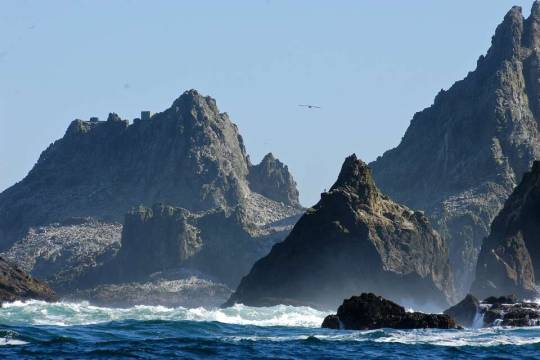
Pictured: The Farallon Islands off the coast of San Francisco.
Though Point Blue biologists have never documented white sharks feeding on fur seal pups (they typically go for juvenile northern elephant seals and sea lions) the “threat of shark attacks on the seal pups is certainly there and I’m sure the pups are aware of that,” McChesney said. “The cove where the video was taken provides a secluded spot to swim and play without worrying about the sharks.”
When the mothers return, they find their pups by using a distinctive call. But in the meantime, the pups seem not to mind the hours away in their secret hideout where they can splash and play to their hearts’ content.
“It was so much fun to watch,” McChesney said. “And knowing that the sight represents such an amazing comeback for their population made the sight mean so much more.”
-via SF Gate, December 23, 2024
#seals#fur seals#baby seals#marine life#baby animals#marine biology#california#san francisco#alaska#endangered species#wildlife conservation#united states#north america#good news#hope
1K notes
·
View notes
Text
Good News - May 15-21
Like these weekly compilations? Support me on Ko-fi! Also, if you tip me on Ko-fi, at the end of the month I'll send you a link to all of the articles I found but didn't use each week - almost double the content!
1. Translocation of 2,000 rhinos in Africa gets underway in “one of the most audacious conservation efforts of modern times”
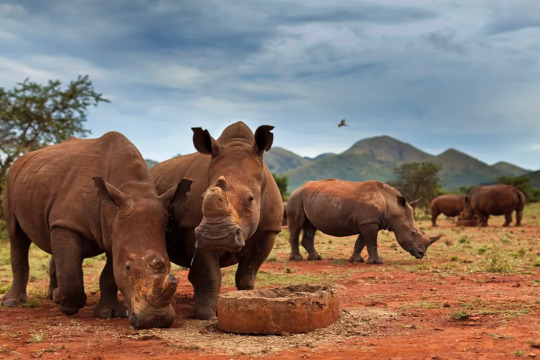
“The 2,000 rhinos - more than are currently found in any single wild location in Africa - represent around 12-15% of the continent’s remaining white rhino population. […] “Rhinos perform an important ecological function in the environment as a large grazing herbivore,” says Dale Wepener[….] “The protection of rhino is far more than just looking after rhino; other species that occur in the protected areas will benefit from the protection,” explains Jooste. “This will lead to an increase in diversity and result in much healthier ecosystems.”
2. Florida Corridor Buffers Effects of Climate Change on Wildlife — And People
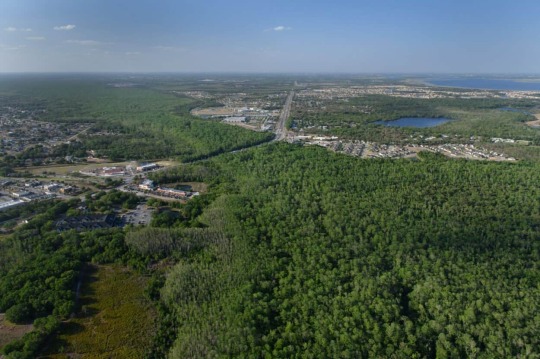
“A massive multi-partner effort that has conserved 10 million acres for wildlife in Florida over past decades will help buffer wildlife—and people—from the effects of climate change, a new report says. […] Protecting these corridors is important for wildlife genetics, demography and connectivity […], conducting prescribed fires in the corridor can reduce the risk of more intense wildfires [… and] they can provide buffers against hurricanes and seasonal thunderstorms.”
3. Global life expectancy to increase by nearly 5 years by 2050 despite geopolitical, metabolic, and environmental threats
“Increases are expected to be largest in countries where life expectancy is lower, contributing to a convergence of increased life expectancy across geographies. The trend is largely driven by public health measures that have prevented and improved survival rates from cardiovascular diseases, COVID-19, and a range of communicable, maternal, neonatal, and nutritional diseases (CMNNs).”
4. Valencia has Spain’s longest urban park
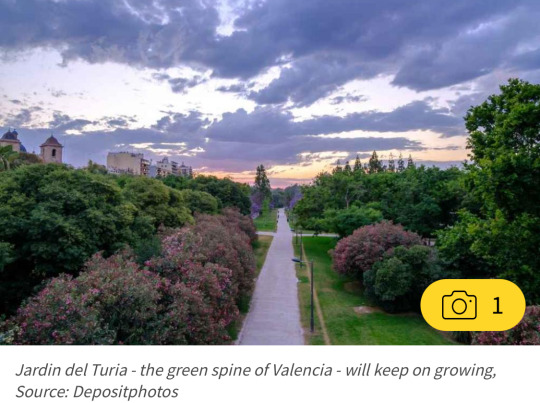
“Jardin del Turia (Turia Garden) is the green spine of the City of Valencia and Spain’s (and possibly Europe’s) longest urban park stretching for a length of 8.5 kilometres [… and] the current administration plans to make Jardin del Turia Europe’s largest city green space by extending it to the sea[….] Almost all Valencia residents (97 per cent) live within 300 metres of an urban green space. […] Jardin del Turia is a true urban oasis that provides exceptional thermal comfort, with a temperature difference of up to three degrees compared to other areas of the city.”
5. This Paint Could Clean Both Itself and the Air
“When an artificial ultraviolet light source shines on [photocatalytic] paint, the nanoparticles react with pollutants to make them break down—theoretically removing them from the nearby air and preventing a discoloring buildup. [… R]esearchers developed a new photocatalytic paint that they claim works using UV rays from ordinary sunlight, making its self-cleaning properties easier to activate. They’ve also shown that they can effectively produce this paint from recycled materials [including fallen leaves].”
6. Planting Seedlings for a Cooler Rockingham
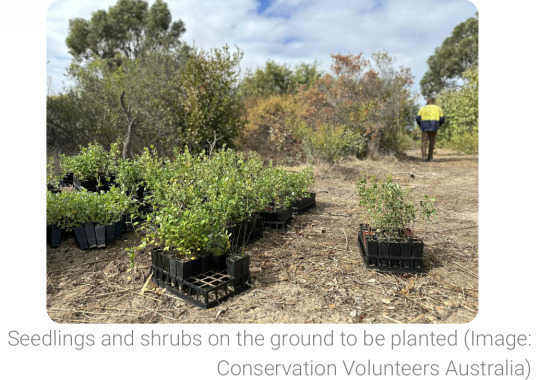
“A dedicated group of volunteers recently planted over a thousand native seedlings in Lewington Reserve [… and] re-established canopy cover to areas of the reserve to create cooling shade for the local community and provide homes for native wildlife. […] Planting lots of trees and shrubs in urban areas can help create shade and cool cities, mitigating the impacts of climate change, contributing to biodiversity conservation and building greener, more resilient communities.”
7. Sydney’s first dedicated affordable housing for trans women designed to deliver ‘positive outcomes’

“Community housing provider and charity Common Equity NSW, […] which is for people on very low to moderate incomes, prides itself on creating inclusive living and promotes the independence and well-being of people and communities […, and] will deliver the first-of-its-kind social housing in a bid to provide a safe place to live for transgender women seeking an affordable home.”
8. Rewilding: How a herd of bison reintroduced to Romania is helping ‘supercharge’ carbon removal
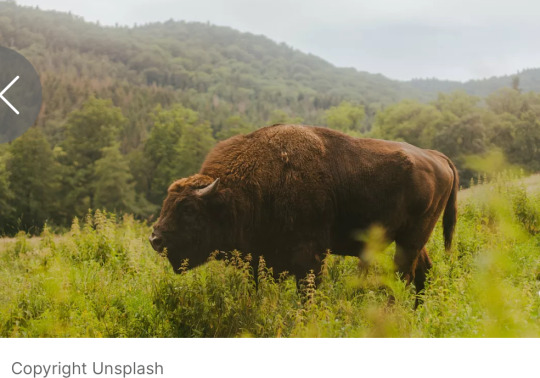
“170 European Bison reintroduced to Romania’s Țarcu mountains could help capture and store the carbon released by up to 84,000 average US petrol cars each year. […] By grazing a 48 square kilometre area of grassland in a wider landscape of 300 kilometres squared, they helped to capture an additional 54,000 tonnes of carbon each year. That is around 10 times the amount that would be captured by the ecosystem without the bison.”
9. World’s biggest grids could be powered by renewables, with little or no storage
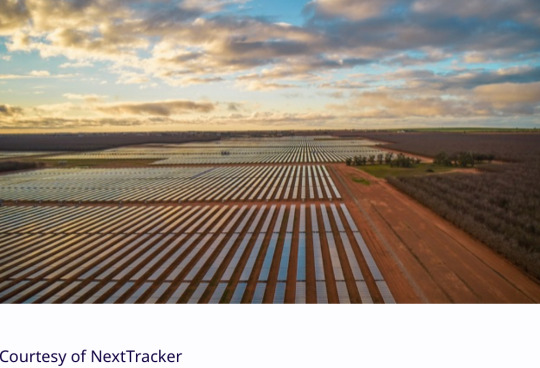
“[…] 100% renewable supply can then match the load by putting surplus electricity into two kinds of distributed storage worth that [an energy expert] says are worth buying anyway – ice-storage air-conditioning and smart bidirectional charging of electric cars, and recover that energy when needed, filling the last gaps with unobtrusively flexible demand.”
10. Supporting the Long-Term Survival of Copper River Salmon and Alaska Native Traditions
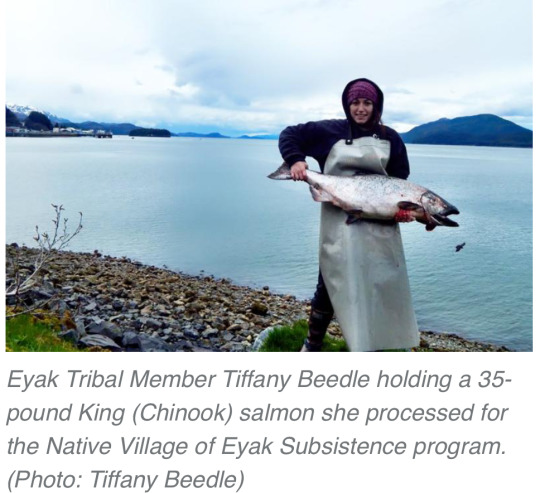
“With $4.3 million in NOAA funds, the Copper River Watershed Project and The Eyak Corporation will remove fish passage barriers, opening more streams for salmon spawning and subsistence fishing. [… As part of this effort, o]ld narrow culverts that constrict water flow will be replaced with “stream simulation” culverts wide enough to fit the full stream, including its banks. They are also deep to allow contractors to place stones and other material inside to mimic a natural stream bottom.”
May 8-14 news here | (all credit for images and written material can be found at the source linked; I don’t claim credit for anything but curating.)
#hopepunk#good news#rhino#white rhino#africa#conservation#rewilding#climate change#florida#wildlife#life expectancy#health#spain#green space#urban parks#recycling#trees#global warming#trans#affordable housing#australia#bison#romania#carbon#carbon capture#renewableenergy#reforestation#salmon#alaska native#nature
390 notes
·
View notes
Text
One of the biggest causes of extinction is invasive species. As humans have intentionally or inadvertently moved various animals and plants around the world to places they've never been, these introduced species have caused massive amounts of damage to habitats and those who depend on them.
While invasive plants largely work by crowding out native competitors (though some actively kill their neighbors), invasive animals frequently hunt native species, sometimes to extinction. Domestic cats, for example, are responsible for the extinction of over five dozen species worldwide; they slaughter 2.4 billion native birds every year in the United States alone. The brown tree snake has driven much of Guam's native wildlife to extinction. And rats prey on native birds and other species worldwide, doing particularly devastating damage on isolated island ecosystems.
Efforts to eradicate rats from these islands leads to dramatic rebounds in any remaining native species, and allows for the reintroduction of extirpated species that may still exist elsewhere, if only in captivity. If a species' home is still overrun by invaders, it can make reintroduction impossible; the sihek (Guam kingfisher, Todiramphus cinnamominus) only exists in captivity and cannot be reintroduced until brown tree snakes are eradicated from the island.
So no wonder the people of Saint Paul Island are so concerned about even a possible rat sighting. Where there is one rat there are often more, and a pair of rats can quickly explode into a population of thousands in just a couple of years if conditions are favorable. The last rat sighting on the island was in 2019, and while that rat was eventually found deceased, it was a genuine cause for alarm. Any boat from elsewhere can bring these unwanted visitors and put native wildlife in great peril.
#invasive species#extinction#endangered species#rats#brown rats#nature#wildlife#ecology#animals#environment#conservation#science#scicomm#Alaska#birds#rewilding#habitat restoration
101 notes
·
View notes
Text
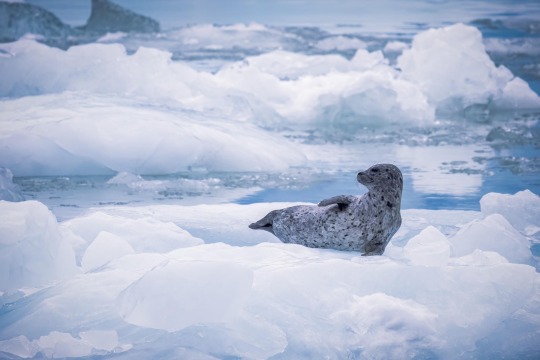
Harbor seal on an ice floe near the Sawyer Glacier - southeast Alaska
#nature#wildlife#animals#wildlifephotography#conservation#naturephotography#animallovers#natgeo#seal#marine life#ocean#alaska#harbor seal#marine mammals
86 notes
·
View notes
Text
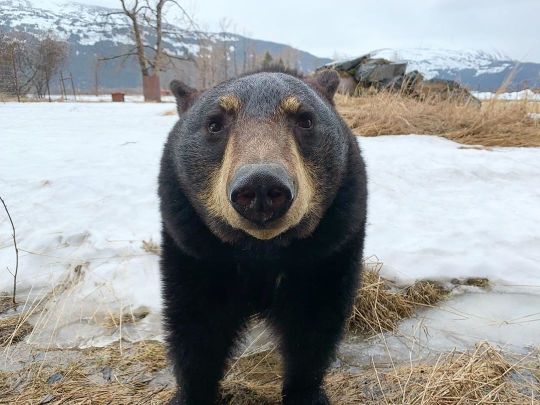


Not much salmon slammin going on right now, but there's still some Sniffy Snoots about for Saturday, so I may sub that in for the season till the fish come back.
Today's is Kobuk up at AKWCC
#bears#black bear#alaska wildlife conservation center#sniffy snoot saturday#salmon slammin saturday#is on hold for now#at least for me
85 notes
·
View notes
Text
Day 226: 2011 Junior Duck Stamp Art Contest

link

link

link

link

link

link

link

link

link

link

link

link

link

link

link

link

link

link

link

link

link

link

link

link

link

link

link

link

link

link
–These images are part of the public domain, meaning you can do anything you want with them! (you could even sell them as a shirt, poster or whatever, no need to credit them!)–
#public domain#art#copyright#free art#open source#flickr#flickblr#creative commons#no copyright#junior duck stamp#duck stamp#stamp#junior#youth#usfws#u.s. fish and wildlife service#fish and wildlife service#conservation#habitat#waterfowl#bird#birds#alaska#ak#contest#art contest#duck#water#soft colors#long post
11 notes
·
View notes
Text
Proenneke's Backpack



Richard Proenneke's backpack is more than just a piece of gear; it is a symbol of his resourcefulness and enduring spirit. This backpack, which has hauled axes, wood, fishing gear, and even stones, stands as a testament to the remarkable journey of a man who lived in harmony with nature.
Despite the countless miles and the heavy loads it has carried, Proenneke's backpack is meticulously cared for. Each stitch and patch tells a story of adventures and a life dedicated to the wilderness. It reflects Proenneke's deep appreciation for the tools that supported his way of life.
In this well-worn yet lovingly maintained backpack, we see the essence of Proenneke's philosophy: a life of simplicity, respect, and profound connection to the natural world. It reminds us that with care and mindfulness, even the most rugged tools of our lives can be preserved, just as we should preserve the world around us.
[The image is courtesy of the YouTube Channel "My Self Rialance". The video title is: "Proenneke's Log Cabin Tour".]
#fishing#wilderness#hiking#nature#richard proenneke#alaska#twin lakes#wildlife conservation#conservation#ecology#environment#nature lovers#mountains#landscape
4 notes
·
View notes
Text
#alaska#antlers#arctic#arctic national wildlife refuge#biodiversity#canada#candice gaukel andrews#caribou#christmas#christmas 2023#conservation#environment#holidays#national park service#natural habitat adventures#nathab#nature#north american coastal plain#oil drilling#reindeer#remote#saint nicholas#santa claus#science#science and environment#scientific research#tundra#wild#wildlife#wolves
6 notes
·
View notes
Text

My local dems sent me a crossword to do. Can you complete it?
#democrat#crossword#alaska#alaska politics#Voting#Election#Democracy#Alaska Politics#Government#Political Figures#Natural Landmarks#Conservation#Candidates#Voting Rights#Representation#Wildlife#Voting Process#Voting Preferences#Alaskan Culture#Local Candidates#Political Positions#Public Funding#Social Security#Abortion Legislation#Alaska State Flower#Alaska’s Governor#Pro-Family Policies#Ranked Choice Voting#Election Day Details#Kodiak Bear
1 note
·
View note
Text
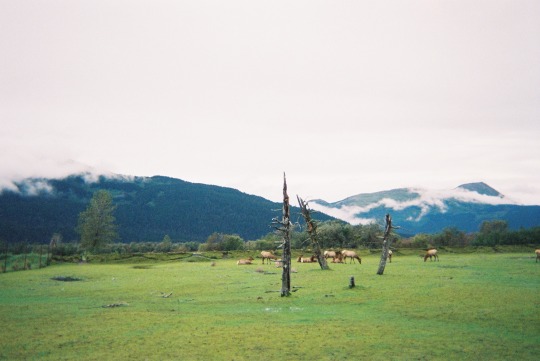

the alaska wildlife conservation centre (my photos).
📍 girdwood, alaska
0 notes
Text
From Dogs Sledding to Glacier Hiking: Explore Alaska’s Wilderness
Looking for a place to get away from the scorching summer? Well, How about planning a getaway to the winter wonderland : Alaska. The supposedly remote place is actually bustling with activities. From rock climbing to exploring restaurants, Alaska offers a wide range of activities to entertain everybody. We have made a list of things to do in Alaska for your convenience so that you can enjoy it…
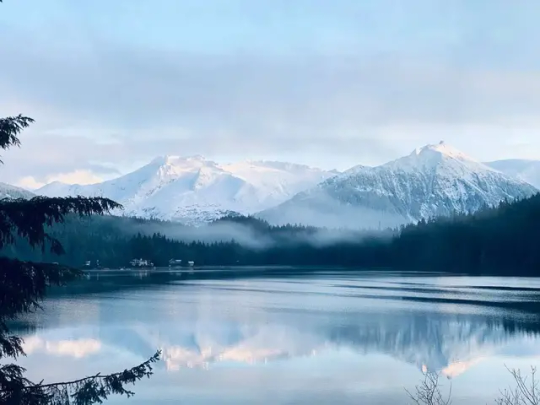
View On WordPress
#Alaska Wildlife Conservation Reserve#Anchorage Market#Denali National Park and Reserve#Go Sledding with Huskies#Hubbard Glacier#Things to do in Alaska
0 notes
Text
Things the Biden-Harris Administration Did This Week #38
Oct 11-18 2024
President Biden announced that this Administration had forgiven the student loan debt of 1 million public sector workers. The cancellation of the student loan debts of 60,000 teachers, firefighters, EMTs, nurses and other public sector workers brings the total number of people who's debts have been erased by the Biden-Harris Administration using the Public Service Loan Forgiveness to 1 million. the PSLF was passed in 2007 but before President Biden took office only 7,000 people had ever had their debts forgiven through it. The Biden-Harris team have through different programs managed to bring debt relief to 5 million Americans and counting despite on going legal fights against Republican state Attorneys General.
The Federal Trade Commission finalizes its "one-click to cancel" rule. The new rule requires businesses to make it as easy to cancel a subscription as it was to sign up for it. It also requires more up front information to be shared before offering billing information.
The Department of Transportation announced that since the start of the Biden-Harris Administration there are 1.7 million more construction and manufacturing jobs and 700,000 more jobs in the transportation sector. There are now 400,000 more union workers than in 2021. 60,000 Infrastructure projects across the nation have been funded by the Biden-Harris Bipartisan Infrastructure Law. Under this Administration 16 million jobs have been added, including 1.7 construction and manufacturing jobs, construction employment is the highest ever recorded since records started in 1939. 172,000 manufacturing jobs were lost during the Trump administration.
The Department of Energy announced $2 billion to protect the U.S. power grid against growing threats of extreme weather. This money will go to 38 projects across 42 states and Washington DC. It'll upgrade nearly 1,000 miles worth of transmission lines. The upgrades will allow 7.5 gigawatts of new grid capacity while also generating new union jobs across the country.
The EPA announced $125 million to help upgrade older diesel engines to low or zero-emission solutions. The EPA has selected 70 projects to use the funds on. They range from replacing school buses, to port equipment, to construction equipment. More than half of the selected projects will be replacing equipment with zero-emissions, such as all electric school buses.
The Department of The Interior and State of California broke ground on the Salton Sea Species Conservation Habitat Project. The Salton Sea is California's largest lake at over 300 miles of Surface area. An earlier project worked to conserve and restore shallow water habitats in over 4,000 acres on the southern end of the lake, this week over 700 acres were added bring the total to 5,000 acres of protected land. The Biden-Harris Administration is investing $250 million in the project along side California's $500 million. Part of the Administration's effort to restore wild life habitat and protect water resources.
The Department of Energy announced $900 Million in investment in next generation nuclear power. The money will help the development of Generation III+ Light-Water Small Modular Reactors, smaller lighter reactors which in theory should be easier to deploy. DoE estimates the U.S. will need approximately 700-900 GW of additional clean, firm power generation capacity to reach net-zero emissions by 2050. Currently half of America's clean energy comes from nuclear power, so lengthening the life space of current nuclear reactors and exploring the next generation is key to fighting climate change.
The federal government took two big steps to increase the rights of Alaska natives. The Departments of The Interior and Agricultural finalized an agreement to strengthen Alaska Tribal representation on the Federal Subsistence Board. The FSB oversees fish and wildlife resources for subsistence purposes on federal lands and waters in Alaska. The changes add 3 new members to the board appointed by the Alaska Native Tribes, as well as requiring the board's chair to have experience with Alaska rural subsistence. The Department of The Interior also signed 3 landmark co-stewardship agreements with Alaska Native Tribes.
The Department of Energy announced $860 million to help support solar energy in Puerto Rico. The project will remove 2.7 million tons of CO2 per year, or about the same as taking 533,000 cars off the road. It serves as an important step on the path to getting Puerto Rico to 100% renewable by 2050.
The Department of the Interior announced a major step forward in geothermal energy on public lands. The DoI announced it had approved the Fervo Cape Geothermal Power Project in Beaver County, Utah. When finished it'll generate 2 gigawatts of power, enough for 2 million homes. The BLM has now green lit 32 gigawatts of clean energy projects on public lands. A major step toward the Biden-Harris Administration's goal of a carbon pollution-free power sector by 2035.
Bonus: President Biden meets with a Kindergarten Teacher who's student loans were forgiven this week
#Thanks Biden#Joe Biden#kamala harris#student loans#click to cancel#politics#US politics#american politics#native rights#jobs#the economy#climate change#climate action#Puerto Rico
2K notes
·
View notes
Text
The polar bear has become perhaps the pre-eminent symbol of the consequences of climate change because it needs sea ice to survive. From November, when the ice fastens to shore, to May, when it breaks up, the ice is polar bear territory across the Arctic. The bears sleep on the ice at night, and pregnant females can even hibernate there during the winter. Males and non-pregnant females stay active through the winter days, and the ice is their hunting ground. Laying ambush behind a pressure ridge of ice fragments, the bears stalk seals. “On the ice, they’re slow,” York says of the seals. “The bears are explosive as they run them down.”
There are between 16,000 and 31,000 polar bears in the world today, congregating in 19 populations across the Arctic. In some areas where the bears were heavily impacted by hunting, bans helped their numbers resurge. But the shrinking of their Arctic habitat is making the species more and more fragile worldwide. In Greenland and Norway, the World Wildlife Foundation lists polar bears as vulnerable. In Russia, they’re rare or recovering, depending on the location, and in Alaska (the only place in the United States where they’re found), polar bears are threatened. In Canada, where 60 to 80 percent of polar bears live, they’re a species of special concern, a click of the dial below threatened or endangered.
The population in the Western Hudson is particularly at risk, having fallen from 1,200 polar bears in the 1990s to about 800 today. Climate change has shrunk the expanse of sea ice that once spread from the North Pole to southern Hudson Bay. In 2020, the ice area was the second smallest since measuring began in the 1970s, and it is thinner than ever.
— Polar Bears Live on the Edge of the Climate Change Crisis
#neil ever osborne#mark jacquemain#geoff york#polar bears live on the edge of the climate change crisis#current events#environmentalism#climate change#global warming#ecology#animals#wildlife conservation#meteorology#weather#arctic circle#greenland#norway#russia#usa#canada#alaska#hudson bay#bears#polar bears#ice#sea ice
0 notes
Text
So thrilling and such a relief. Excerpt from the article above:
"In an aggressive move that angered Republicans, the Biden administration canceled the seven remaining oil and gas leases in Alaska’s Arctic National Wildlife Refuge on Wednesday, [September 7,] overturning sales held in the Trump administration’s waning days, and proposed stronger protections against development on vast swaths of the National Petroleum Reserve-Alaska.
The Department of Interior’s scrapping of the leases comes after the Biden administration disappointed environmental groups earlier this year by approving the Willow oil project in the petroleum reserve, a massive project by ConocoPhillips Alaska that could produce up to 180,000 barrels of oil a day on Alaska’s petroleum-rich North Slope. Protections are proposed for more than 20,000 square miles (51,800 square kilometers) of land in the reserve in the western Arctic.
Some critics who said the approval of Willow flew in the face of Biden’s pledges to address climate change lauded Wednesday’s announcement. But they said more could be done. Litigation over the approval of the Willow project is pending.
“Alaska is home to many of America’s most breathtaking natural wonders and culturally significant areas. As the climate crisis warms the Arctic more than twice as fast as the rest of the world, we have a responsibility to protect this treasured region for all ages,” Biden said in a statement...
The Biden administration also announced proposed rules aimed at providing stronger protections against new leasing and development in portions of the National Petroleum Reserve-Alaska that are designated as special areas for their wildlife, subsistence, scenic or other values. The proposal still must go through public comment. Willow lies within the reserve but was not expected to be affected by the proposed rules.
The Arctic National Wildlife Refuge’s 1.5-million-acre (600,000-hectare) coastal plain, which lies along the Beaufort Sea on Alaska’s northeastern edge, is seen as sacred by the Indigenous Gwich’in because it is where caribou they rely on migrate and come to give birth. The plain is marked by hills, rivers and small lakes and tundra. Migratory birds and caribou pass through the plain, which provides habitat for wildlife including polar bears and wolves.
Bernadette Demientieff, executive director of the Gwich’in Steering Committee, thanked the administration for the lease cancellation — but issued a warning.
“We know that our sacred land is only temporarily safe from oil and gas development,” she said. “We urge the administration and our leaders in Congress to repeal the oil and gas program and permanently protect the Arctic Refuge.”"
-via AP News, September 7, 2023
#alaska#arctic#arctic national wildlife refuge#wildlife#conservation#biodiversity#caribou#Gwich'in#indigenous land#indigenous issues#polar ice#oil industry#climate change#oil drilling#good news#hope#biden#biden administration#voting matters
2K notes
·
View notes
Text

A humpback whale breaches outside of Juneau, Alaska
#nature#wildlife#animals#wildlifephotography#conservation#naturephotography#animallovers#alaska#whales#humpback whale#marine mammals
89 notes
·
View notes